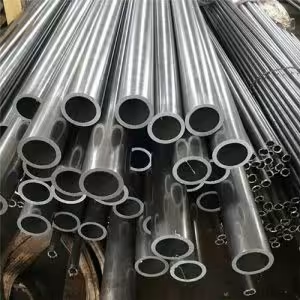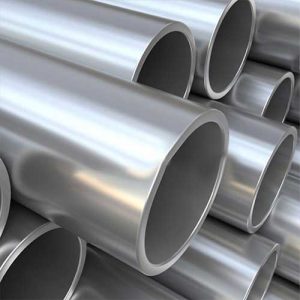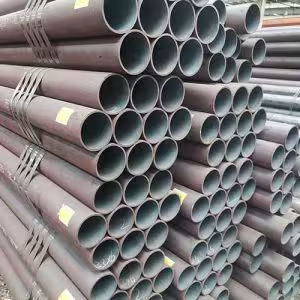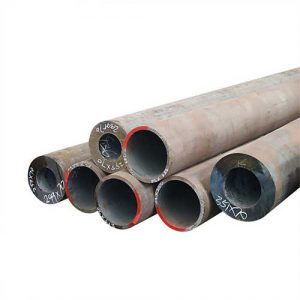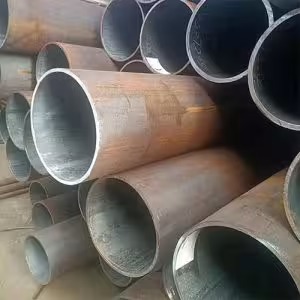Welcome to My Blog!
Before we dive into the content, I’d love for you to join me on my social media platforms where I share more insights, engage with the community, and post updates. Here’s how you can connect with me:
Facebook:https://www.facebook.com/profile.php?id=61565500692293
Now, let’s get started on our journey together. I hope you find the content here insightful, engaging, and valuable.
Table of Contents
Introduction
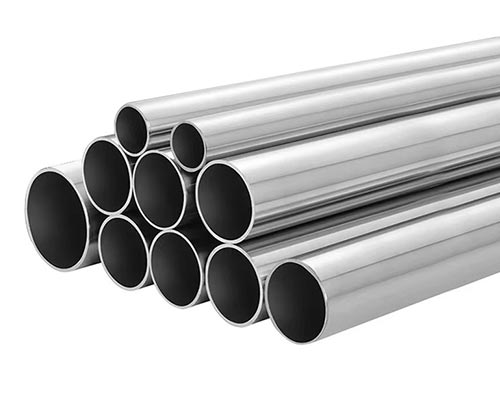
In modern construction, the choice of materials is one of the most critical factors that influence the safety, durability, and performance of a structure. Among the many materials available, seamless steel pipes have become a staple in a variety of construction projects, from residential buildings to large-scale infrastructure. These pipes are highly valued for their strength, corrosion resistance, and flexibility, making them ideal for both structural and plumbing applications.
This article will explore the top benefits of using seamless steel pipes in construction, highlight their applications, and explain why they are a superior choice compared to welded pipes. Additionally, we will provide a detailed comparison of seamless steel pipes against other types of pipes, highlighting their key advantages.
What Are Seamless Steel Pipes?
Seamless steel pipes are steel pipes that are manufactured without a seam or welded joint. They are made by extruding the steel through a mold while it is in a hot or cold state, creating a pipe that is uniform in structure and strength. This process eliminates the need for welding, which means that the pipe does not have any weak points that could compromise its performance.
Seamless steel pipes are available in a wide range of sizes and grades, making them suitable for various construction and industrial applications. They are typically used in high-pressure and high-temperature environments, where strength and integrity are paramount.
Key Benefits of Using Seamless Steel Pipes in Construction
1. Increased Strength and Durability
One of the primary reasons why seamless steel pipes are favored in construction is their superior strength and durability. Unlike welded pipes, which can have weak spots at the joints, seamless steel pipes offer uniform strength throughout the entire length of the pipe. This makes them ideal for high-stress applications, such as those found in pressure systems, structural frameworks, and heavy machinery. Seamless steel pipes are less prone to cracks, leaks, and failures, even under extreme conditions, providing long-lasting performance in the construction environment.
2. Enhanced Corrosion Resistance
Corrosion is one of the most significant challenges in construction, particularly in structures exposed to harsh weather conditions or chemicals. Seamless steel pipes are known for their high resistance to corrosion, especially when treated with protective coatings or made from corrosion-resistant steel alloys. This makes them an ideal choice for plumbing systems, water transportation, and even applications in marine environments.
In comparison to welded pipes, seamless steel pipes are less susceptible to rust and degradation, ensuring that the structure remains intact and functional for a more extended period.
3. Versatility in Application
Seamless steel pipes are incredibly versatile and can be used in a wide range of construction applications. They are commonly used for plumbing, HVAC systems, and fire protection systems due to their ability to handle both high and low-pressure conditions. Additionally, seamless pipes are often employed in structural applications such as scaffolding, reinforcement, and even as part of structural frameworks.
Their flexibility in design and strength makes them an essential material in both residential and commercial construction projects.
4. Higher Pressure Tolerance
Due to the absence of welds, seamless steel pipes can withstand higher pressure than their welded counterparts. This makes them particularly well-suited for high-pressure systems, such as oil and gas pipelines, steam lines, and hydraulic systems. In these applications, the risk of weld failure is a significant concern, as welded joints can become weak points that are prone to cracking under pressure. Seamless steel pipes eliminate this risk, providing a more reliable and safer option for pressure-sensitive systems.
5. Improved Flow Efficiency
The uniform structure of seamless steel pipes helps maintain consistent internal dimensions, which improves the flow efficiency of fluids and gases passing through them. This is particularly beneficial in construction applications involving fluid transport, such as water systems, sewage systems, and HVAC systems. The smooth interior surface of seamless steel pipes reduces friction, which can increase the overall flow rate and reduce the energy required to move fluids or gases.
Applications of Seamless Steel Pipes in Construction
Seamless steel pipes are used in a wide variety of construction applications. Some of the most common include:
- Plumbing Systems: Used for water supply and drainage systems in both residential and commercial buildings.
- Structural Frameworks: Employed in the construction of steel frames and other structural components that require high strength and durability.
- Hydraulic Systems: Used in construction machinery and equipment where high pressure and strength are required.
- Fire Protection Systems: Seamless steel pipes are often used for fire sprinkler systems due to their reliability and resistance to corrosion.
- HVAC Systems: Ideal for heating, ventilation, and air conditioning systems due to their ability to handle high temperatures and pressures.
Comparison of Seamless Steel Pipes with Other Pipe Types

The following table compares the key features of seamless steel pipes against welded steel pipes and other common pipe materials.
| Feature | Seamless Steel Pipes | Welded Steel Pipes | PVC Pipes | Copper Pipes |
|---|---|---|---|---|
| Strength | High, uniform strength throughout | Strength limited by welds | Lower strength compared to steel | Moderate strength, prone to damage |
| Durability | Very durable, resistant to corrosion | Less durable at the welded joints | Less durable, can crack or degrade | Moderate durability, corrosion-prone |
| Pressure Tolerance | High pressure tolerance | Lower pressure tolerance | Not suitable for high pressure | Moderate pressure tolerance |
| Corrosion Resistance | Excellent resistance to corrosion | Vulnerable at weld points | Susceptible to environmental damage | Corrosion-resistant but expensive |
| Flexibility | Highly versatile in applications | Limited flexibility due to welds | Limited to specific applications | Limited flexibility, expensive |
| Cost | Generally higher cost | More cost-effective for large quantities | Low cost, but limited applications | Expensive |
As seen in the table, seamless steel pipes excel in terms of strength, pressure tolerance, and durability compared to other types of pipes. While welded pipes are more cost-effective, they come with the risk of weak spots at the joints, which can compromise their performance.
Conclusion
Seamless steel pipes are an essential material in modern construction, offering a combination of strength, durability, pressure tolerance, and resistance to corrosion. Their applications range from plumbing systems to structural components and high-pressure systems, making them a versatile and reliable choice for a wide range of construction projects. While they may come at a higher initial cost, their long-term performance and durability make them a smart investment for heavy-duty construction and infrastructure projects.
Whether you are working on residential buildings or large-scale industrial structures, seamless steel pipes provide the strength and reliability you need to ensure the safety and longevity of your construction projects.
FAQ
What are seamless steel pipes used for in construction?
Seamless steel pipes are used in a variety of construction applications, including plumbing, structural frameworks, HVAC systems, fire protection systems, and hydraulic systems.
Why are seamless steel pipes stronger than welded pipes?
Seamless steel pipes are stronger because they do not have welds, which can be weak points in welded pipes. The manufacturing process creates a uniform pipe with no joints, allowing for consistent strength throughout the length of the pipe.
Can seamless steel pipes be used for high-pressure applications?
Yes, seamless steel pipes are ideal for high-pressure applications due to their ability to withstand significant stress and pressure without the risk of failure at weld joints.
Are seamless steel pipes resistant to corrosion?
Yes, seamless steel pipes are highly resistant to corrosion, especially when made from alloyed steel and treated with protective coatings. This makes them a suitable option for outdoor applications and harsh environments.
What are the disadvantages of seamless steel pipes?
While seamless steel pipes offer many benefits, they tend to be more expensive than welded pipes, which may be a factor for large-scale projects where cost is a primary concern.



